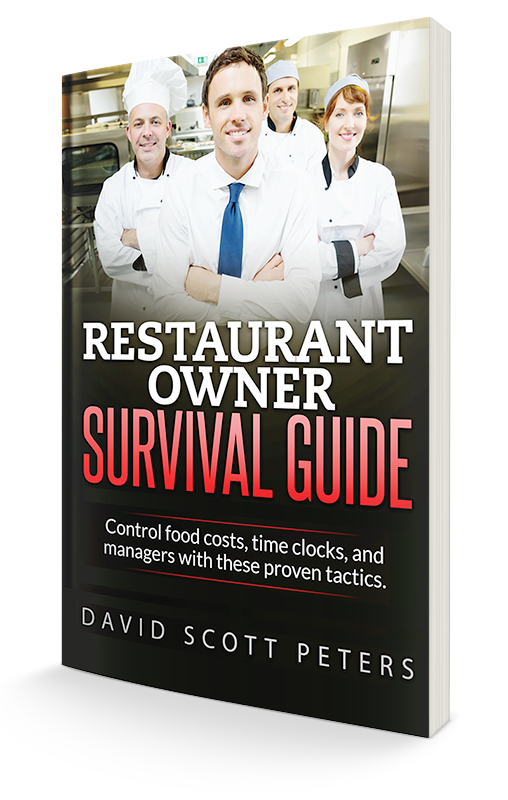4 Steps to a Clean Restaurant that Stays Clean
No matter what kind of restaurant you run, your job is to provide great food with wow customer service in a clean restaurant, which is a matter of safety for your employees and guests alike. Hot food should be hot and cold food cold. I often refer to these simple principles as Restaurant 101. As someone who teaches systems and profitability, I believe that Restaurant 101 trumps everything!
After you’ve mastered Restaurant 101, next you must have checklists for every position and cash controls in place. This creates a culture where the details matter. From there you are ready for the real profit-making systems.
Sounds easy enough, right? But you would be amazed at the number of restaurants that fail to simply deliver on Restaurant 101. And I’m not talking about the food or service; I’m talking about a clean restaurant!
And I’m sorry, but there is no excuse for a dirty restaurant.
The excuses I often hear are:
1) I don’t know the kitchen
2) I can’t get people to use our checklists
3) I don’t have help
4) I don’t think it’s that bad
For me, I look at everything from the outside of the building through the inside to the kitchen’s back door. And what I have been seeing upsets me. I see gum and grease trails on the sidewalk leading into the building. I see dust everywhere from little ledges on top of the chair rails to fans that make you sick just looking at them. I smell dirty bathrooms. I see chairs that have crumbs and shoe scuffs. I see tables that have not been cleaned correctly and that have gum under them. I see kitchens where raw sewage comes up from the drain walk-in coolers that have meat drippings coming down them. I see kitchen shelves that are covered in a fine film of grease, dust stuck to it and eating surfaces placed directly on them. And this is just a short list.
Translation… I see a lack of pride! Look I get it. Some restaurants are in old buildings. Some restaurants can’t afford to update. I’m OK with a restaurant that’s a bit tired, but I am not OK with a dirty restaurant. And there is a clear difference.
Allowing any of the excuses I listed above stop you from keeping a clean restaurant is exactly what they are: excuses that should never be used.
If you are someone who this article speaks about, don’t get mad and don’t make excuses. Instead, TAKE ACTION!
But what action?
How to have a clean restaurant
Step 1 – Host your last cleaning party!
Have an ALL-staff meeting, where after you cover your topics, everyone grabs a rag and deep cleans the restaurant from top to bottom.
Step 2 – Create checklists for every position for both the start and end of each shift.
Create checklists for weekly side work duties. Make sure they are detailed enough that anyone could pick one up and complete it to the level you expect it to be completed. That means you have to list out detailed steps for each process, list the cleaners/tools they will need and what success looks like. (In our house, we give our kids detailed checklists for their chores and from the day we started using them, we have not had any conflict, and we have clean rooms. Did you know that there are 13 steps to cleaning a toilet in our house?) Your checklist can never be too detailed.
Step 3 – Hold the right people accountable for those checklists.
Most managers and owners think that when the checklists are not completed or done properly they should write up the employee. I think differently. I think that if they are not completed it’s the manager on duty who is written up. Why? Because I believe in a culture of “close to open.” This means each shift’s job is to set the next shift up for success. This means that all side work, prep, etc., must be completed so the next shift that comes to work isn’t running around like a chicken with their head cut off trying to overcome the disaster the other shift left them with. It’s the manager’s job to make sure every checklist is complete and done properly. If the manager lets staff leave without checking them out, then it’s the manager’s job to do the incomplete work so that he or she gives the next shift a restaurant that’s ready. So if it’s not completed, it’s the manager who takes the blame, not the line staff.
Step 4 – Tie it into manager bonus.
If you’ve done a good job with your checklists and explained in great detail all of the little details you never want to see ignored again, you will want to start using a facilities walk-thru report. The template we have for members was molded directly from the franchise system I used to run. It lists out everything you want inspected to
ensure it follows your cleanliness standards. One section lists what success looks like in each item to be graded.
For example, the front entryway (0 – 3 points): entry will be free of dust, dirt and trash. All lights will be in working order and all glass surfaces will be free of any smudges, water spots or blemishes.
In most cases it’s the owner who will complete this walk-thru report on a monthly basis. Some people disagree with me on this point. But I also suggest you tell your management team when you will be doing the walk-thru. I do this because my goal is not to catch them doing something wrong; it’s to catch them doing something right, and I will tie their score directly into their bonus program. It’s that important!
So take pride in your business. Create a culture where the details matter. Set each shift up for success. Ensure you are at the bare minimum delivering on the promise of Restaurant 101 by systemizing your restaurant to be clean so that it never falls off standard again, and you’ll be on your way to the real money-making steps.
For more information on checklists and how to set the standard for a clean restaurant, read Breaking Away from the Insanity: How to easily take control of your restaurant and make more money. Download it here.





